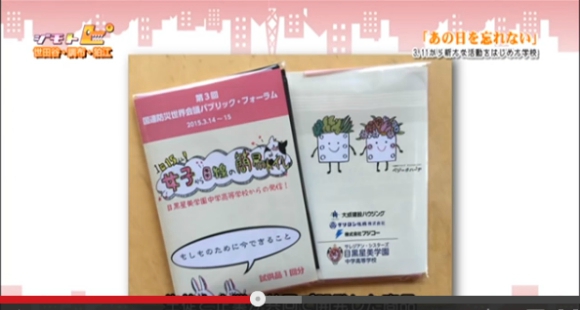
Although we explored public restrooms the world over in a previous article, we left out the fact that many refugees, natural disaster survivors, and other displaced people have no access to the modern plumbing many of us take for granted. For those living in areas where public toilets are unavailable, a trip to the bathroom is at best a chore, and at worst a major sanitary concern.
Luckily technological advances are being made in order to help remedy these problems, and so far 2015 has been a promising year in that regard. UK researchers and volunteers were able to successfully create an urine-powered outhouse, while over in Japan a high school girls’ volunteer club recently came up with a new economic and hygienic portable toilet option.
Following the earthquake that caused heavy damage to the Northeastern part of Japan in 2011, Meguro Seibi Gakuen, a Catholic girls school in Tokyo, began volunteer activities to visit and help raise money for disaster victims in Miyagi Prefecture.
▼ Wreckage in Miyagi Prefecture following the Great East Japan Earthquake
They soon learned that many of the Miyagi residents in temporary living situations were troubled with the cleanliness, disposal, and safety of the manhole toilets that had been set-up for lack of regular plumbing.
The 20-volunteer group saw a need for change, and soon got to work devising a better and cheaper solution. What they came up with was a cost-friendly alternative that has been dubbed “the magic portable toilet” in Japanese. Consisting of two bags and a special polymer sheet, the toilet set can be packed and carried anywhere for outdoor or indoor use by disaster relief victims and campers.
https://www.youtube.com/watch?v=3qYqJsINdpA
The way it works is simple:
▼ The polymer sheet is folded into the bag, which can be used as a toilet liner.
▼ Liquid activates the polymer sheet, which turns the contents into a solid, gel-like consistency.
▼ The bag and contents are then placed in the odor-sealing bag for easy disposal.
Not only does it minimize mess, it’s also cost-efficient. At only 35-40 yen (approx. US$0.30-$0.34) a set, it’s almost 1/3 the cost of existing portable models in Japan. The polymer sheet is manufactured by Fujikoh, a recycling company, and the odor-eliminating bag is courtesy of Kuriron Kasai Ltd.
The schoolgirls’ quick response to the needs of disaster victims just goes to show that where there’s a will, there’s a way, and that often just listening to people and their needs is the best way to start making a difference.
Source: grape, YouTube/Meguro Seibi Junior & Senior High School
Feature/top image: YouTube/Meguro Seibi Junior & Senior High School
Insert images: Flicker/Carsten Knoche, YouTube/Meguro Seibi Junior & Senior High School